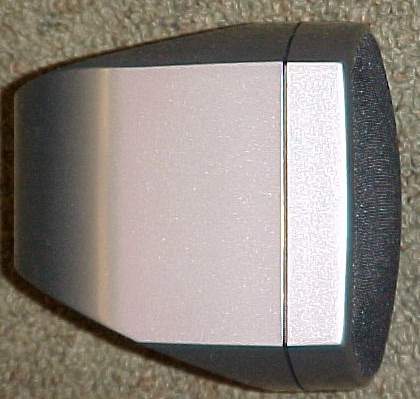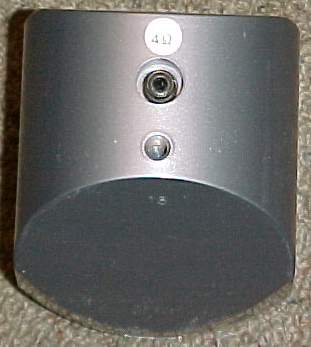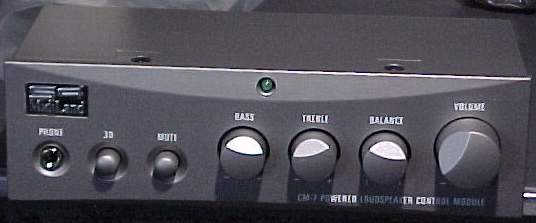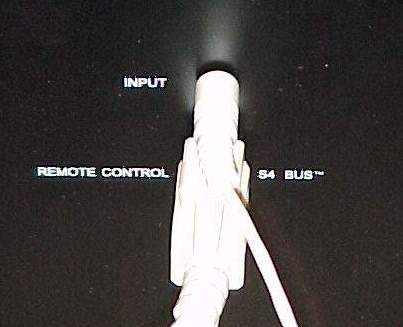
Original Link: https://www.anandtech.com/show/698
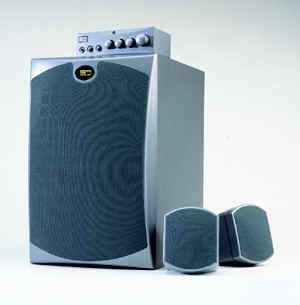 Despite
the ever increasing presence of surround sound and 4.1 systems in the computer
sound market, 2.1 sounds remain as a strong category of their own. Though they
may not fill the bill for everyone seeking to turn their home computer into
a home theatre system or the ultimate gaming machine, they do remain as a strong
option for those that enjoy listening to music at their computer or are seeking
a more economical sound solution.
Despite
the ever increasing presence of surround sound and 4.1 systems in the computer
sound market, 2.1 sounds remain as a strong category of their own. Though they
may not fill the bill for everyone seeking to turn their home computer into
a home theatre system or the ultimate gaming machine, they do remain as a strong
option for those that enjoy listening to music at their computer or are seeking
a more economical sound solution.
Though many 2.1 system are offered as cheap OEM sound packages principally designed so that users can hear their computer dinging when they do something wrong, it is possible to find quality speaker manufacturers turning their tools to smaller computer systems. Much is the case for MidiLand, who offers both full surround sound systems (the S4 8200 and S4 7100) and smaller 2.1 sound systems (this model and the S4 3050M).
2.1 systems are designed to work around the size limitations of a speaker driver that will fit on a desktop, as smaller driver cannot reproduce low frequencies well. The systems utilize two stereo speakers combined with a subwoofer to extend the frequency response of the smaller drivers used in many computer speakers. This also allows for a higher powered bass driver, to provide the room filling low frequency energy without blowing out the ears of a listener in a near field situation.
The MidiLand S4 4060M review is a system that includes two satellites, a subwoofer, and an external control unit that can be mounted in an extra full size drive bay or left on the desktop. The control unit has volume, pan, and two tonal controls, in addition to a 1/8" headphone jack, mute button, and button for MidiLand's 3D RSS (Real Surround Sound) processing. The components all feature MidiLand's metallic finish common to models ending in the "M" designation.
|
Specifications (Courtesy of MidiLand) |
|
|
RMS
Power
|
Total:
60W
Satellites: 15W Subwoofer: 30W |
|
Frequency
Response
|
Satellites:
180Hz - 20kHz (+/-3dB)
Subwoofer: 20Hz - 180Hz (+/-3dB) |
|
Input
Sensitivity
|
Not
listed
|
|
Drivers
|
Satellites:
2.5 inch
Subwoofer: 6.5 inch |
|
S/N
Ratio
|
>
55dB
|
|
Dimensions
(WxHxD)
|
Satellites:
3.3" (W) x 3.9" (H) x 4.2" (D)
Subwoofer: 8.7" (W) x 13.4" (H) x 12.2" (D) Control Module: 5.8" (W) x 1.7" (H) x 3.1" (D) |
Setup
The 4060M system is designed to provide the user with a variety of installation options. The flexibility is achieved with a unique design in both the satellite speakers and the control module. Following opening the box and reading the instructions, it is left to the user to choose what installation suits their needs the best.
The choice that will most affect the listening experience comes in placing the satellite speakers. The system utilizes the same satellite speakers as the 3050M system previously reviewed. A description of setting up the satellites comes from the previous article.
Depending on the listening environment, the speaker enclosures have different angles on the top (15°) and bottom (25°) faces to allow for a lower or higher sweet spot, respectively. For taller listeners, this helps get the sweet spot up to their ears, instead of just smacking them in the chest and having things sound bad as they are off axis of the stereo image. A little care is required to make sure that both are on the same angled face.
The nature of a small computer speaks induces a certain amount of directionality to the sound reproduction, as the drivers are smaller and the lower powers need to be more focus. This is fitting to a near field listening situation in which there is a limited number of people (usually one in a computing situation) listening to the system and therefore the sweet spot can be narrowed. This also benefits such 3D positioning techniques as A3D, and environmental audio effects such as EAX, whose algorithms are based on psycho acoustical perception at the sweet spot.
The satellites connect to the amplifier integrated into the subwoofer via two 6' long RCA cables. The cabling for the system is not the highest quality equipment-the gauge of the wire is fairly high (i.e. thin wire), and the connectors are molded plastic. This seems to be a sacrifice focused on keeping prices down, though at the relatively low power levels of the satellites, the wire is sufficient, though not optimal.
More Setup
The 4060M steps away from its little brother by providing an independent control module with multiple installation options. The unit can be integrated into a computer case via mounting in a half-height 5.25" drive bay, or can either be placed on the desktop or mounted to some other surface via the included Velcro. Other than needing to access the power switch disguised by the MidiLand S4 logo on the subwoofer, this allows the speakers to be placed more for acoustics than for access to any controls on any of the satellites or sub.
Mounting the control module internally presents some design issues that MidiLand has tackled well. While internal connections on sound cards vary, the external connections are all essentially the same, especially when connecting to a simple 2.1 system. The amplifiers for the system are integrated into the subwoofer, as it became the common point in the system; it is also the largest enclosure and could accommodate the size of the amplifiers. Integrating them into the control module would have prevented it from being mounted internally, both for size limitations and the opportunities for interference.
As a result, all of the audio, speaker, and power connections are made to the subwoofer. The connection to the sound card is provided through a stereo 1/8" minijack connection to the rear of the subwoofer. From there, a 10 foot long 15 pin cable connects to the control module from the subwoofer. For integrating the unit into a computer, mounting screws for a standard drive bay are included. In addition, there is a 2 foot long 15 pin ribbon cable attached to panel mount connectors to connect to the drive when mounted internally. The opposite end is then mounted to a slot cover and installed into one of the covers for expansion slots at the rear of the computer. For internal mounting, both an open half-height bay and open expansion slot in the case is required.
For user that decide that keeping the control module external is a better idea, MidiLand includes rubber feet and self stick Velcro for mounting options. The Velcro could be used to attach the box to the side of the monitor, or even to just on top of the subwoofer. Even for tabletop mounting, the Velcro may be superior because the 15 pin cable is relatively heavy compared to the lightweight control unit.
The control cable is almost three feet longer than the speaker wires, most likely because it is a stock multipin cable that has been applied to this task. The internal cable, however, appears fairly custom. Should the internal mounting be a desired feature, it is important to check that two feet of internal cable will be sufficient to reach from an empty drive to an empty slot.
Once these setup decisions have been implemented, the inline power adapter (note the change from the 3050M's wall wart power converter) can be connected and the subwoofer tucked away. The sub can be placed more remotely than in systems with all of the audio controls on the enclosure; this system has only the main power switch in the sub. From there, it was time to sit back and listen, and see what the system could do.
The Sound
In any 2.1 computer speaker system, there is a fine line to walk in balancing the sound between the subwoofer and satellites. As the subwoofer is serving for more than just rumble, and actually reproducing the lower part of the vocal and musical frequencies, it is serving a somewhat awkward role. When the subwoofer power is well balanced with the satellites, and the frequency responses are decently matched, a system can work out fine. Much was the case in the 3050M system, which used lower power levels and more comparably matched ones between the subs and sats.
The 4060M is offered as a more powerful solution in the 2.1 series. The satellite power has been increased to offer more SPL to the listener. The sub power remains the same, though the cabinet is somewhat changed. The drivers in the system have not been changed however; this becomes obvious in the satellites at higher powers.
At normal listening levels with the tone controls for bass and midrange set to their default detent in the potentiometer, the system exhibits its most quality sound. The bass seems more present in this system than the smaller MidiLand systems, and can be quite boomy. The satellites have the same presence in the upper midrange frequencies as before; they are the same satellites as seen in the 3050M.
The low midrange is where the system falls short. Raising the power to the satellites and changing the nature of the subwoofer has accented both the lower frequencies and the higher frequencies. Unfortunately, this has left the lower midrange frequencies behind. The system sounds somewhat hollow despite the powerful bass it puts out, as it cannot remain consistent through the spectrum sweeps we performed.
The system is designed with a decent amount of power. The larger amplifier will push the satellite speakers hard enough to make you sit back from the normal listening position. For high intensity music or game effects, they will not fall short. However, as things get louder, the low midrange loss is emphasized. The smaller speakers are very good at reproducing the higher frequencies and the system becomes somewhat harsh at higher volumes as the highs overpower the rest of the system. However, the higher power leaves little room for altering the tonal characteristics of the smaller satellites.
The control module has four functions that can alter the nature of the sound. Panning is fairly straight forward; pick left or right, and send the sound there. The potentiometer used in the control rolls the sound off quickly, so if is off its center detent even a little it will greatly affect the sound. There is a function button to engage MidiLand's 3D processing algorithms. As described in the 3050M review, the function essentially takes the higher frequencies and increases their amplification to project them more behind the listener to simulate a 3D sound field. Essentially, it alters the tonal quality of the sound to simulate reverb, and is better left off.
The remaining two controls are for bass and treble. The frequencies they are centered on are not well chosen for the system. The bass control affects frequencies that are sent to the satellites as well as the sub, instead of just being a sub control that could be used to better balance the sound. When it is turned up, low frequencies that quickly distort the satellites are amplified, and the headroom of the system is immediately affected. The midrange control seems to be centered on too high a frequency for the system. Though it can be used to reduce the sharpness somewhat, it would be better used at lower frequencies to try and increase the presence of the lower midrange frequencies.
These listening tests combined to create an overall impression of the system. See how it stacks up to its little brother with our conclusion.
Conclusion
The S4 4060 speaker system stands as MidiLand's high powered 2.1 system, weighing in at 60W total. It is a step up in power from the smaller 3050M system, though the satellites and sub driver remain the same size. At the same time, they have increased the installation options over the smaller system by offering the option of mounting the control module inside a drive bay.
The installation process for the system remained consistent with previous experiences with MidiLand products. The manual, though concise, was detailed in both instructions and specifications. This demonstrates a commitment to the product that is also supported by a three year limited warranty. From there, it is important to look at what the system is trying to do.
The higher power levels in the system definitely make it louder than the 3050M. However, as the drivers have not changed, the system has less headroom and clipping is more noticeable as the volume rises. The high power also leaves little room for the tonal controls to be very effective.
The control module offers a unique option in that in can be installed in a drive bay. However, it ties up real estate in the computer case by requiring both an open slot and open bay. For those that have the room, it can be a nice feature, though the metallic finish will stand out somewhat. When the box is not mounted in the case, it definitely needs to be secured, as it is too light to hold itself down if there is any cable tension.
The many similarities between this system and the 3050M lead it to be compared to its little brother. The acoustics of the system are reduced by the efforts to bring more power in. At $99 estimated street price, the system does not quite achieve the power it tries for. Sonically, the smaller system (3050M) has better matched components as the satellites will not be overdriven by the higher power. It also carries a lower price tag. Mounting the control module in the computer does save desk real estate, though it ties up more valuable space in a case. It has a high gimmick factor; those that want it will enjoy it, while those that don't need it will most likely be bothered by it.
In conclusion, the system does have the power to make the user sit up and take notice. It sacrifices its tonal quality somewhat to achieve this power, and users looking for a more musical system would be well advised to take a second look at its little brother. The tonal controls included with the system do not seem to form a strong ensemble as the power seems to battle both with the nature of the speakers and the choices in frequencies affected by the bass and treble. For the power hungry that don't want to drop big buck on a large system, the 4060M has a home. However, for those looking more for acoustic quality, they would be advised to consider other options.

